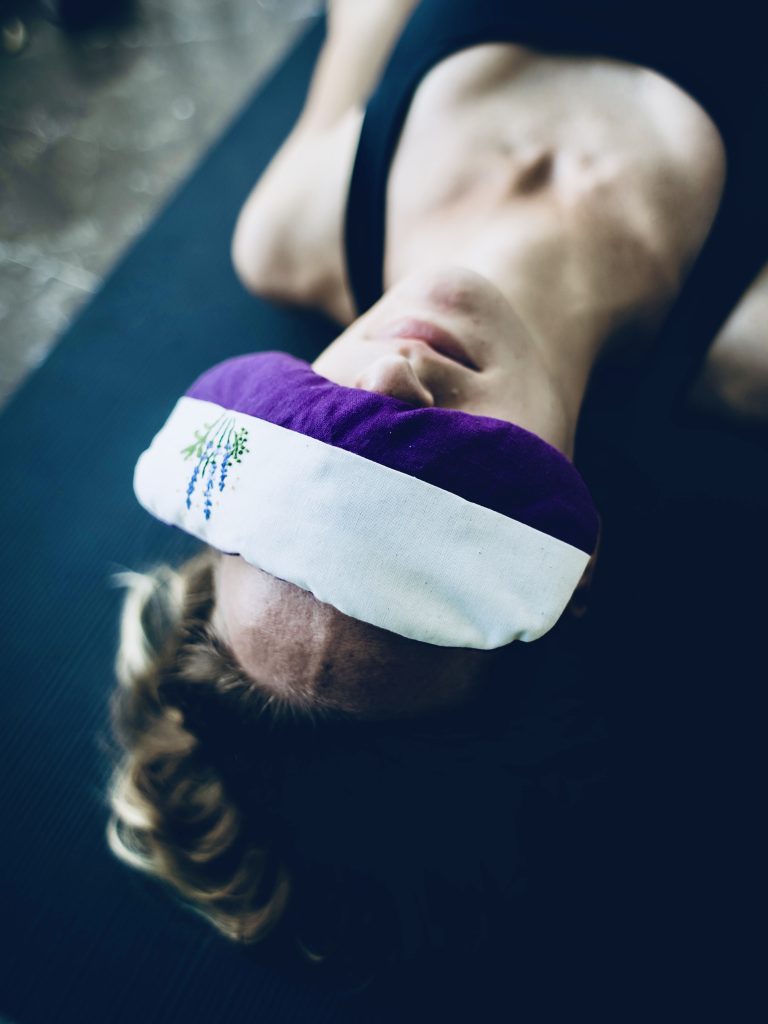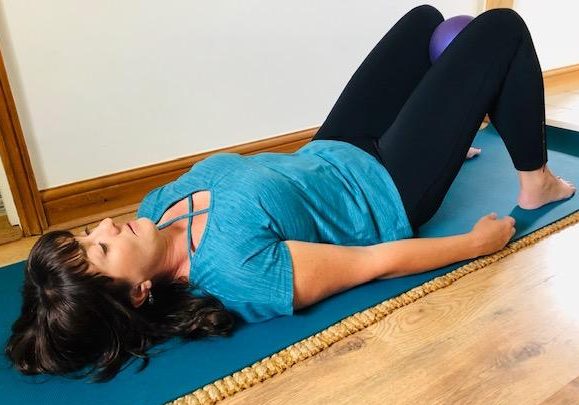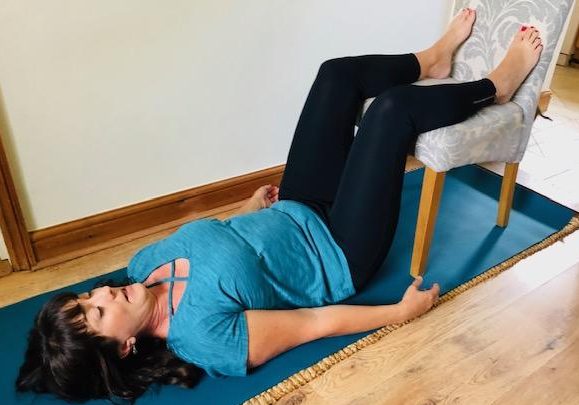
Please read the previous article on Trauma and Your Psoas Muscles for more info before doing Constructive Rest Position …
Constructive Rest Position is the simplest way to release psoas muscle contraction, as it allows the skeleton and gravity to do the work of neutral alignment in a restful state. This unravels tension patterns that are held deep in the core and allows us to let go of old emotional conditioning. Resting in this position helps you to recognise and work with pelvic instability and unresolved emotional holding patterns. In this pose, you don’t need to anything but relax. Gravity will do the work.
How to do Constructive Rest Position
Find a quiet and comfortable place to rest where you will be undisturbed.
Lie on a blanket or yoga mat and have a towel in case you need to create a small pillow to place underneath your head.
Lie on your back with your head parallel to the floor. Your head should rest at the same level as the spine and pelvis, so if you use a towel to support the head (no thicker than 1-2 inches), place the towel under the upper half of your skull, not under the neck and as you settle more deeply into the position you may need to lower or remove it completely.
Feet flat on the floor, knees hip width apart and bent at a 45 degree angle. Place a soft ball fully inflated or a yoga bolster or large cushion (the width of your hip sockets) between your legs as this helps to maintain the correct skeletal alignment of the legs and feet.
OR use a chair to support the legs by placing your lower legs and feet on the seat of a flat chair, parallel to the floor. Your knees will be bent at a right angle.


Rest your hands anywhere that is comfortable.
Maintain a neutral pelvis …
In Constructive Rest Position maintain a centred and neutral pelvis – neither flattening nor exaggerating the curves in your lower back or neck. This neutral position is the starting point for unravelling all of the tension in your body.
Sinking down into the mat …
Imagine you are “smiling” with the back of your abdominals. Let it all go by sensing the weight of your bones sinking down into the mat. If you notice any part of your skeleton that feels as though it is suspended, simply let it go.
Feel for any place where a muscular contraction prevents the bones from surrendering to the pull of gravity and let it relax completely. As your psoas releases, the distribution of weight against the mat will start to feel more even throughout your body.
Take your time …
Take your time to rest here and simply notice what takes place. Constructive Rest Position is a non-doing position. It is a being position. It is gravity that releases the energetic nerve tension out of the psoas and that’s what makes this position so constructive.
Begin with daily sessions lasting 5-10 minutes and gradually increase over time to 20 minutes. If you experience tingling along the sacrum, move out of the position by rolling onto your side. Tingling or numbness indicates that you have been in the position too long, or that your skeletal alignment limits the length of time you can stay in Constructive Rest Position.
To come out of this position …
When you are ready to come out of the position, let your knees lead as you roll over onto one side and allow your whole body to follow. Rest there for a moment and then move onto all fours and use your hands and feet to push up off the floor to stand.
Remember that fear is an emotion that can “lock” itself into the body resulting in both physical and emotional tension. By regularly restoring balance to your psoas muscles you are likely to release this pent up tension, which can have a profound effect on both your physical and mental wellbeing.
You will feel a greater sense of inner peace, along with fewer muscle aches and strains. When the body can properly support itself, movement is less restricted and requires less effort thus leaving you more energetic.
Lengthening and releasing the psoas muscles restores comfort and balance to the entire body.
With consistent practice, you can learn how to isolate this muscle which can be immensely useful and healing in the long run.
Bibliography
Staugaard-Jones, Jo Ann. The Vital Psoas Muscle. Lotus Publishing, Chichester, PO, 2012 and North Atlantic Books, Berkeley, CA, 2012.
Koch, Liz, Core Awareness. North Atlantic Books, Berkeley, CA, 2012.
Berceli, David. The Revolutionary Trauma Release Process. Namaste Publishing, Vancouver, BC, Canada, V6J 1Z1.
